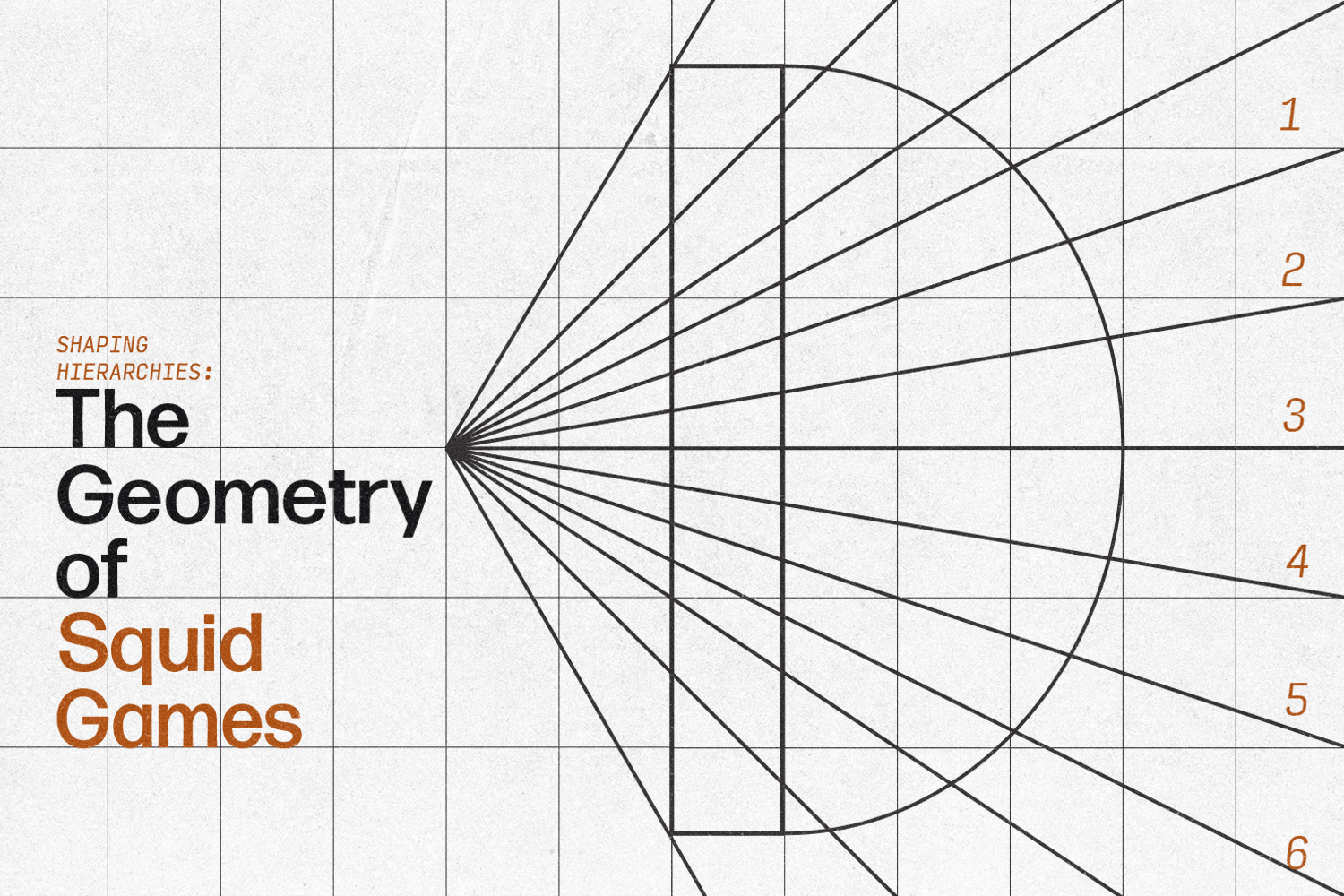This past December, the second season of the beloved Korean Netflix series Squid Game was released. While Season One was a tough act to follow, Season Two did not disappoint with a storyline that pulled at our heartstrings, made us question the systems we exist in, and showed us elaborate visuals packed with symbolism. With a stellar cast, sets, and, most iconically, costume design, Squid Game remains the most popular Netflix show in many countries, including the US. The costume designer, Cho Sang-Kyung, used three powerful things to weave symbolism into the process.
Of course, she used color and silhouette strategically, but the most interesting element she incorporated was geometry. In an interview with IGN, Cho explained how she chose the iconic green tracksuit as the uniform because it reminded her of the ones sold at supply stores in front of children’s schools in Korea. Green is a color that was commonly worn by young children when she was growing up. It was important to choose something childish because the show’s overarching theme is childhood in Korea. The players are dehumanized and reduced to lower status by being dressed as children, put in a setting resembling a nursery, and forced to play childish games. The tracksuits were also a practical choice, considering the players had to engage in physically challenging activities such as tug-of-war and, you know…stabbing each other to death.
She also wanted to contrast the blood many players would inevitably be covered in. This made the first game all the more shocking when the first players were shot. Cho also used the power of contrasting colors when deciding on the color of the pink soldiers’ jumpsuits. The vivid pink shade directly opposed the players in green, establishing them as the enemy. Every soldier wears a black mask serving two purposes: concealing their identity and establishing their hierarchy. The masks also further separate the players from the soldiers because it shows that while the soldiers are protected, nothing is protecting the players. Each soldier has a white shape on their mask representing their status. The more sides the shape has, the higher in command they are. Circles hold the least amount of power, and they answer to the triangles, who answer to the squares, who answer directly to the frontman.
This simple way of distinguishing roles adds to the theme of childhood by creating a system that uses motifs that are often found in a children’s setting. It is simple enough that even a child would understand. While the front man’s mask does not have a shape on it, it is clear that he is the most powerful because his mask is the most geometrically complicated. There is only one other type of mask that is more intricate than the frontman’s, which is the VIPs’ animal masks seen in Season One. This detail is often overlooked as an aesthetic choice, but I don’t believe it’s a coincidence that these gold masks are made with many facets. If geometry represents power, it shows that even the frontman, a man with a god complex, answers to a higher power: money. The VIPs represent money, a power that controls everyone involved in the games to the point that they would not just die for it but, more importantly, kill for it.
Using geometry, a school subject taught to young children, as a way to distinguish a class system seems obvious in hindsight, but the way the concept is executed by Cho Sang-Kyung in Squid Game is impressively clever, practical, and, at times, subtle. This simple way of communicating to the audience also puts us in a childish position, leaving us to analyze simple shapes to find meaning.
Words by Mishi Ali
Graphic by Eve Friday

